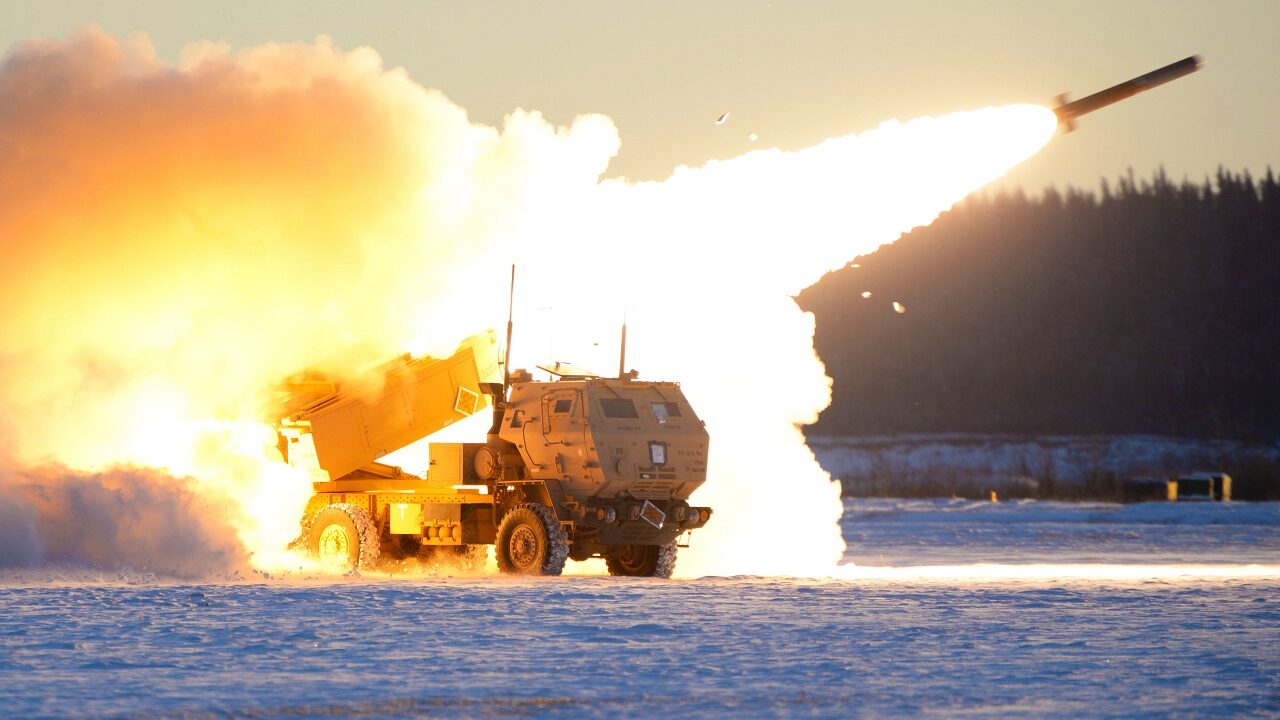Russian forces are heavily armed with state-of-the-art weaponry and fighting vehicles that have helped them wreak havoc in Ukraine.
However, Kyiv has fought back in a big way.
And that means inflicting serious damage and taking many Russian military vehicles out of action.
Recently emerged footage, shared on social media, shows a Ukrainian artillery brigade using SMArt artillery to destroy a Russian mortar and demonstrates just how capable Kyiv is becoming in its fight against the Kremlin.
Footage Shows Ukrainian SMArt Munitions Blasting Russian Mortar
Footage shared by war watcher account UA Weapons shows a Russian 2S4 Tyulpan mortar being blown sky high by a Ukrainian BONUS / SMArt artillery.
The footage shows the mortar going up in a massive mushroom cloud as the Ukrainian strike hits its target near Bakhmut, Ukraine.
“A Russian 2S4 Tyulpan 240mm self-propelled mortar was destroyed by BONUS/SMArt 155 artillery-delivered top-attack submunitions fired by the Ukrainian 26th Artillery Brigade in the vicinity of Bakhmut, Donetsk Oblast.”
SMArt Proving Its Worth on the Battlefield
Footage shared by war watcher account Blue Sauron in October of 2022 shows the value of the SMArt systems in Ukraine.
It depicts a Russian Infantry Fighting Vehicle (IFV) in a stationary position next to the roadside before being struck by a SMArt shell and going up in a ball of flames and whisps of smoke.
A second IFV sits up the roadway without suffering damage in the Ukrainian strike.
“Ukrainian forces striking a Russian IFV likely with a German SMArt 155 artillery shell.”
What Are SMArt Munitions?
The SMArt artillery round was designed in 1989 by the German defense company Diehl BGT. It is a 155-millimeter artillery round designed for attacking armored vehicles that was first used by the German military in the late 1990s.
This long-range artillery round contains submunitions that seek out a target and destroy it. For this reason, some military analysts consider the SMArt round to be a cluster munition. The 2008 Convention on Cluster Munitions bans any cluster weapons from being used in combat, but Germany denies that the SMArt is accurately described as such.
The name comes from the German words Suchzünder Munition für die Artillerie 155 (meaning “sensor-fuse munition for 155mm artillery”). The 47-kilogram projectile contains an EFP (explosively formed penetrator) warhead that’s designed to get through heavy armor, including MBTs (Main Battle Tanks).
#Ukraine: A Russian 2S4 Tyulpan 240mm self-propelled mortar was destroyed by BONUS/SMArt 155 artillery-delivered top-attack submunitions fired by the Ukrainian 26th Artillery Brigade in the vicinity of Bakhmut, #Donetsk Oblast. pic.twitter.com/uGukQaEtWG
— ???????? Ukraine Weapons Tracker (@UAWeapons) June 19, 2023
The SMArt explodes from above to create the maximal explosive force and hit fighting vehicles where they are weakest and most vulnerable. BONUS systems designed by BAE Systems, meanwhile are a “fire-and-forget” munition that can strike a target within a 32,000 square meter area and is currently used in France, Norway, Sweden and Finland.
Ukrainian forces striking a Russian IFV likely with a German SMArt 155 artillery shell.#Russia #Ukraine pic.twitter.com/1ZCIxkiIHy
— BlueSauron????️ (@Blue_Sauron) October 4, 2022
Jack Buckby is 19FortyFive’s Breaking News Editor. He is a British author, counter-extremism researcher, and journalist based in New York. Reporting on the U.K., Europe, and the U.S., he works to analyze and understand left-wing and right-wing radicalization, and reports on Western governments’ approaches to the pressing issues of today. His books and research papers explore these themes and propose pragmatic solutions to our increasingly polarized society.

